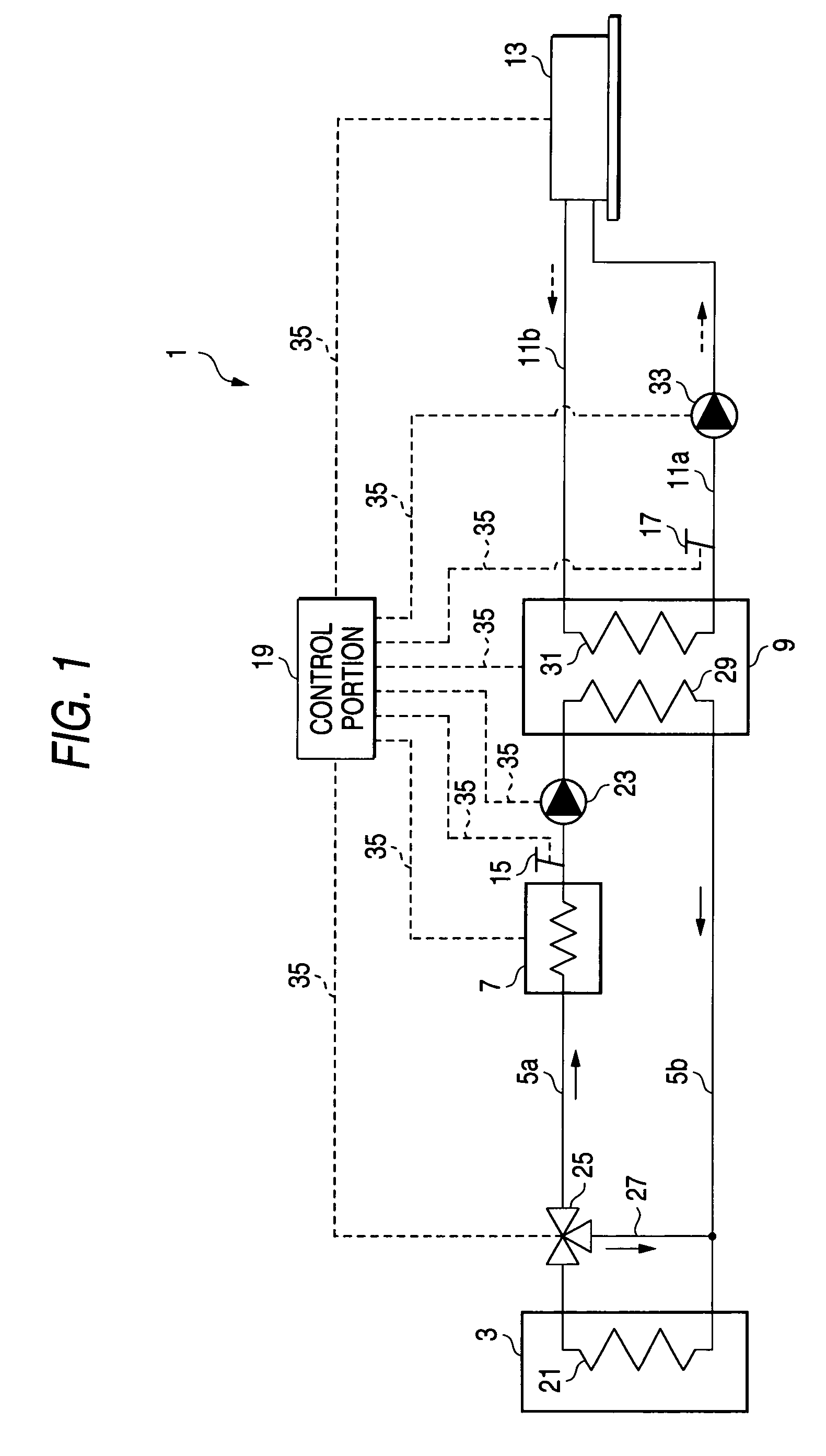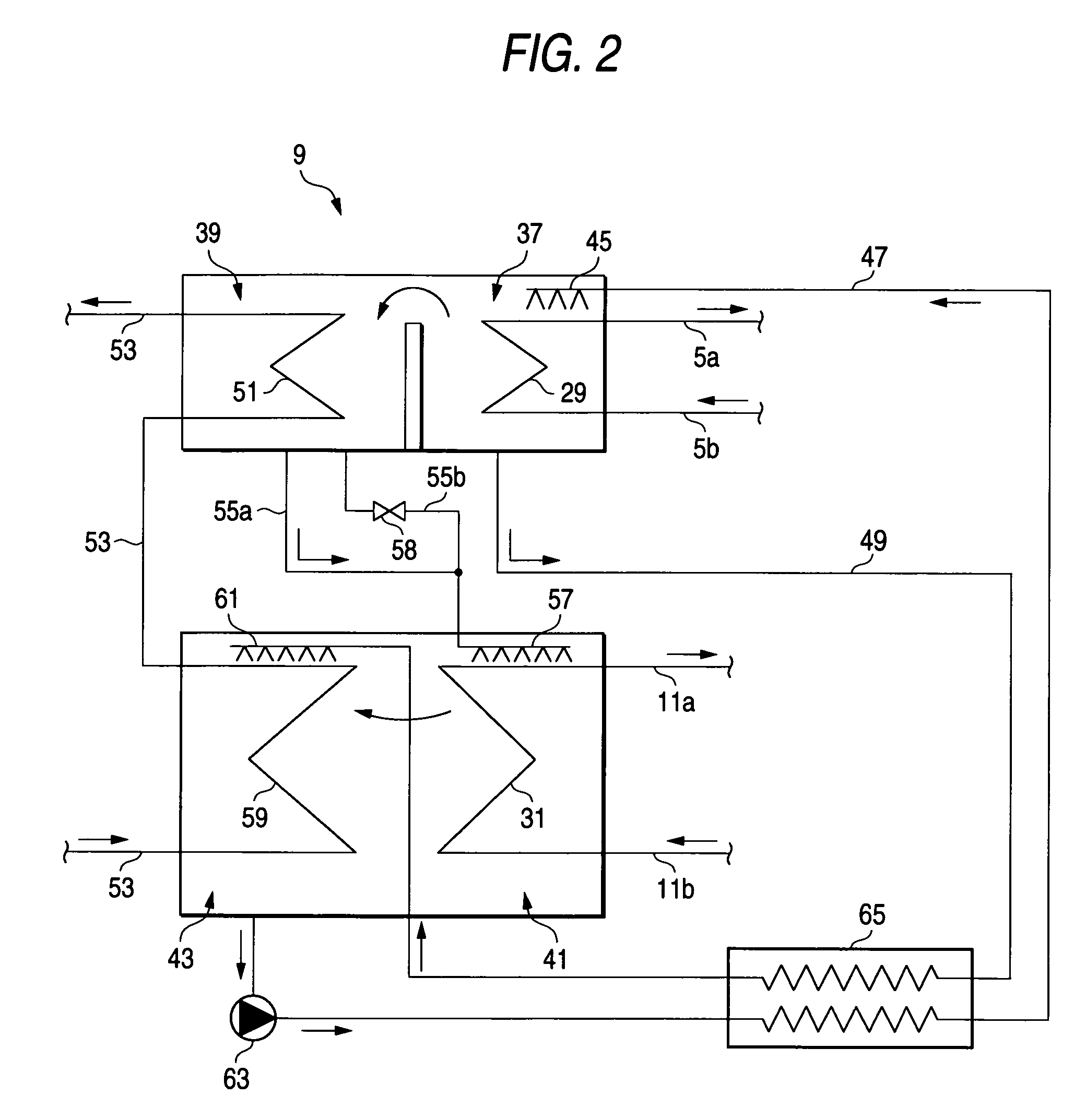Air conditioner
a technology for air conditioners and air conditioners, which is applied in the direction of cooling fluid circulation, lighting and heating apparatus, and domestic cooling apparatus, etc. it can solve the problems of reducing the heating value of the operation of the driving auxiliary heating device is not performed, and the energy consumed in the auxiliary heating device is reduced, so as to enhance the energy-saving capability of the air conditioner and reduce the energy consumption. the effect of auxiliary heating device consumption and enhancing the energy-saving capacity
- Summary
- Abstract
- Description
- Claims
- Application Information
AI Technical Summary
Benefits of technology
Problems solved by technology
Method used
Image
Examples
first embodiment
[0024]Hereinafter, a first embodiment of an air conditioner, to which the invention is applied, is described with reference to FIGS. 1 to 3B. FIG. 1 is a schematic diagram illustrating the configuration and operation of the first embodiment of the air conditioner to which the invention is applied. FIG. 2 is a schematic diagram illustrating the configuration and operation of an absorption chiller of the air conditioner that is the first embodiment to which the invention is applied.
[0025]FIG. 3A is a diagram illustrating an operation of an auxiliary heating device in the case that there is no exhaust heat from an exhaust heat source during a cooling operation. FIG. 3B is a diagram illustrating an operation of the auxiliary heating device in the case that there is exhaust heat from the exhaust heat source during a cooling operation. Incidentally, in the following description of this embodiment, the air conditioner designed specifically for cooling is described by way of example.
[0026]T...
second embodiment
[0044]A second embodiment of the air conditioner, to which the invention is applied, is described hereinbelow with reference to FIG. 4 to FIG. 5B. FIG. 4 is a schematic diagram illustrating the configuration and operation of the second embodiment of the air conditioner to which the invention is applied. FIG. 5A is a diagram illustrating an operation of an auxiliary heating device in the case that there is no exhaust heat from an exhaust heat source during a heating operation. FIG. 5B is a diagram illustrating an operation of the auxiliary heating device in the case that there is exhaust heat from the exhaust heat source during a heating operation. Incidentally, constituent elements of this embodiment, which are the same as those of the first embodiment, are designated by the same reference characters used for denoting the same constituent elements of the first embodiment. Further, the description of such constituent element is omitted herein. Hereunder, constituent elements and feat...
third embodiment
[0055]A third embodiment of the air conditioner, to which the invention is applied, is described hereinbelow with reference to FIG. 6. FIG. 6 is a schematic diagram illustrating the configuration and operation of the third embodiment of the air conditioner to which the invention is applied. Incidentally, constituent elements of this embodiment, which are the same as those of the first and second embodiments, are designated by the same reference characters used for denoting the same constituent elements of the first and second embodiments. Further, the description of such constituent element is omitted herein. Hereunder, constituent elements and features of the third embodiment, which differ from those of the first and second embodiments, are described.
[0056]The third embodiment differs from the first and second embodiments in that the air conditioner 1 of the first embodiment is designed specifically for cooling, and the air conditioner 67 of the second embodiment is designed specif...
PUM
 Login to View More
Login to View More Abstract
Description
Claims
Application Information
 Login to View More
Login to View More - R&D
- Intellectual Property
- Life Sciences
- Materials
- Tech Scout
- Unparalleled Data Quality
- Higher Quality Content
- 60% Fewer Hallucinations
Browse by: Latest US Patents, China's latest patents, Technical Efficacy Thesaurus, Application Domain, Technology Topic, Popular Technical Reports.
© 2025 PatSnap. All rights reserved.Legal|Privacy policy|Modern Slavery Act Transparency Statement|Sitemap|About US| Contact US: help@patsnap.com



